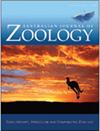Optimisation of a pollen DNA metabarcoding method for diet analysis of flying-foxes (Pteropus spp.)
IF 1
4区 生物学
Q3 ZOOLOGY
引用次数: 7
Abstract
. Determining the diet of fl ying-foxes can increase understanding of how they function as pollinators and seed dispersers, as well as managing any negative impacts of large roosts. Traditional methods for diet analysis are time consuming, and not feasible to conduct for hundreds of animals. In this study, we optimised a method for diet analysis, based on DNA metabarcoding of environmental DNA (eDNA) from pollen and other plant parts in the faeces. We found that existing eDNA metabarcoding protocols are suitable, with the most useful results being obtained using a commercial food DNA extraction kit, and sequencing 350 – 450 base pairs of a DNA barcode from the internally transcribed spacer region (ITS2), with ~550 base pairs of the chloroplast rubisco large subunit ( rbcL ) as a secondary DNA barcode. A list of forage plants was generated for the little red fl ying-fox ( Pteropus scapulatus ), the black fl ying-fox ( Pteropus alecto ) and the spectacled fl ying-fox ( Pteropus conspicillatus ) from our collection sites across Queensland. The diets were determined to comprise predominantly Myrtaceae species, particularly those in the genera Eucalyptus , Melaleuca and Corymbia. With more plant genomes becoming publicly available in the future, there are likely to be further applications of eDNA methods in understanding the role of fl ying-foxes as pollinators and seed dispersers.飞狐(Pteropus spp.)花粉DNA元条形码分析方法的优化
。确定狐蝠的饮食可以增加对它们如何作为传粉者和种子传播者的理解,以及管理大型栖息地的任何负面影响。传统的饮食分析方法耗时长,而且不适合对数百只动物进行分析。在这项研究中,我们优化了一种基于花粉和粪便中其他植物部分环境DNA (eDNA)的DNA元条形码分析方法。我们发现现有的eDNA元条形码方案是合适的,使用商业食品DNA提取试剂盒获得最有用的结果,从内部转录间隔区(ITS2)测序350 - 450碱基对的DNA条形码,以叶绿体rubisco大亚基(rbcL)的约550碱基对作为二级DNA条形码。我们在昆士兰各地的收集点为小红狐(Pteropus scapulatus)、黑狐(Pteropus alecto)和眼镜狐(Pteropus illatus)生成了一份饲料植物清单。确定饮食主要由桃金娘科物种组成,特别是桉树属、千层树属和杉属。随着更多的植物基因组在未来变得公开可用,eDNA方法可能会进一步应用于了解飞狐作为传粉者和种子传播者的作用。
本文章由计算机程序翻译,如有差异,请以英文原文为准。
求助全文
约1分钟内获得全文
求助全文
来源期刊
CiteScore
2.40
自引率
0.00%
发文量
12
审稿时长
>12 weeks
期刊介绍:
Australian Journal of Zoology is an international journal publishing contributions on evolutionary, molecular and comparative zoology. The journal focuses on Australasian fauna but also includes high-quality research from any region that has broader practical or theoretical relevance or that demonstrates a conceptual advance to any aspect of zoology. Subject areas include, but are not limited to: anatomy, physiology, molecular biology, genetics, reproductive biology, developmental biology, parasitology, morphology, behaviour, ecology, zoogeography, systematics and evolution.
Australian Journal of Zoology is a valuable resource for professional zoologists, research scientists, resource managers, environmental consultants, students and amateurs interested in any aspect of the scientific study of animals.
Australian Journal of Zoology is published with the endorsement of the Commonwealth Scientific and Industrial Research Organisation (CSIRO) and the Australian Academy of Science.

 求助内容:
求助内容: 应助结果提醒方式:
应助结果提醒方式:


